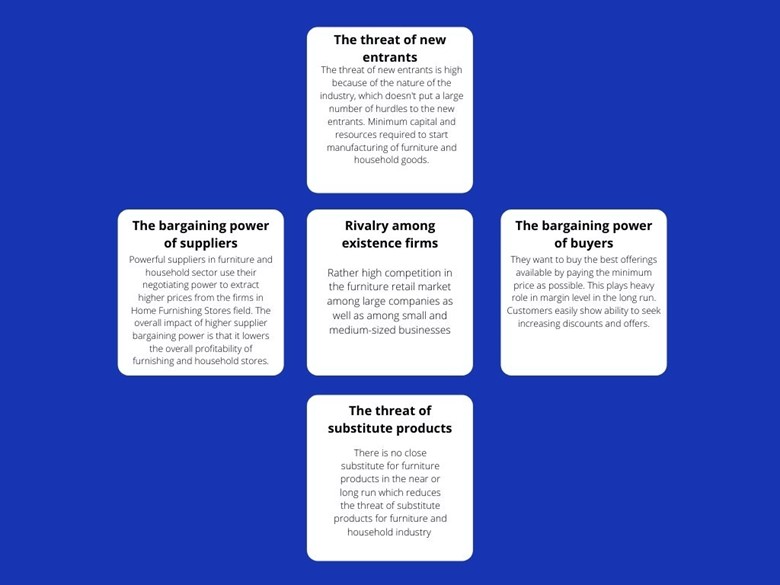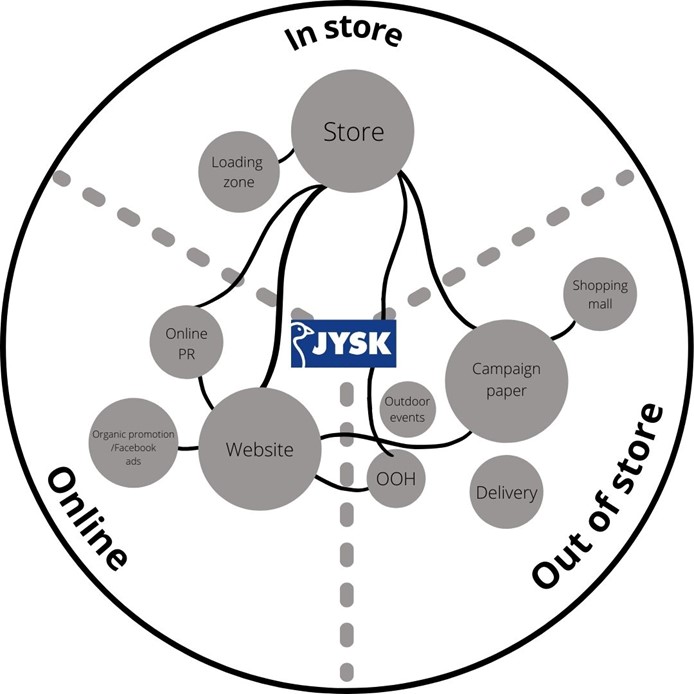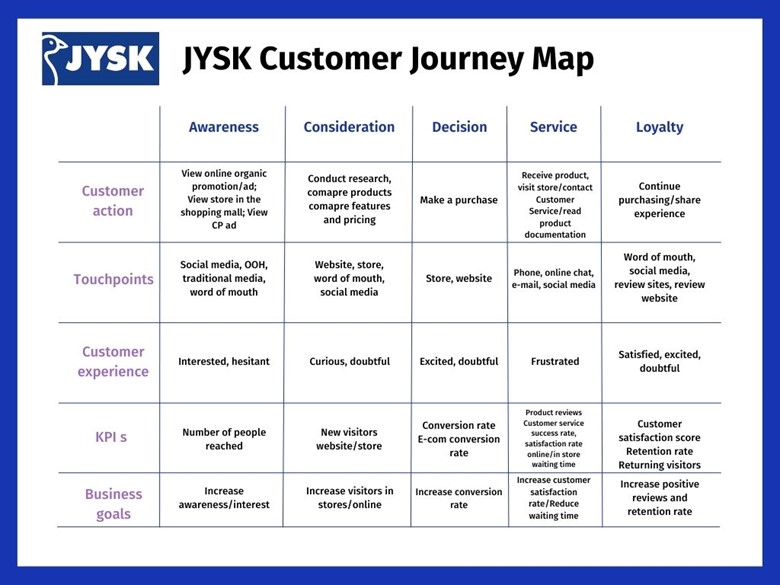Introduction
As companies digitize, the amount of customer data available in a short period of time has increased exponentially. Mobile app usage, location data, customer service interactions and social media feeds can now be combined with phone call data, electronic check transaction histories, email interactions and in-store activities. Companies require a clear definition, understanding, and perception of the customer experience in order to plan and build effective customer experience strategies. Knowing the customer flow and journey should allow you to assess the quality of the customer experience and the ROI of customer experience investments in terms of marketing results, as well as identify and address the touchpoints where the greatest negative happens. Together, these channels currently collect a wealth of raw data that contains valuable insights into where and how customers prefer to interact with organizations, as interactions occur every day, both online and offline. Customer experience data, for example, can reveal information about customer engagement with the company’s product, service, or content, as well as the risks and reasons for abandonment at various phases of the buying path.
In order to create and adjust tailored experiences, big data is essential. Companies are increasingly investing in clever systems for gathering and processing customer data. Artificial intelligence and machine learning are frequently used to power these data collection platforms. All of these factors contribute to a better understanding of customer concerns, consumer behavior, and the improvement of a company’s business processes.
Understanding client needs will result in cost savings, improved targeted marketing activity, identification of consumer pain spots across various buying journeys, and the retention of existing customers and market share.
Organizations face the daunting task of learning how to intelligently manage the customer experience and find customer problems, and most importantly, solve them. This task ranges from finding ways to create an engaging customer experience at all stages of the customer interaction to managing customer expectations and evaluation before, during and after the buying process.
Literature review
Customer experience
The importance of consumer experience as a driver of consumption was noted in the early economic literature by Keynes, where he pointed out that buyers purchase goods to create desired experiences. [6 ] Parsons suggested that a product utility function alone is not sufficient to explain consumer behavior. He argued that consumers’ choices are conditioned by their personal value system, which allows them to determine whether a particular experience is desirable. [9]
Customer experience, according to Shep Hinken, is made up of parts of service and more broadly, anything that is formed by any engagement with an organization’s products or services. To improve the customer experience, a company must establish genuine relationships with both internal and external customers. [12]
Matthew Dixon, Nick Toman and Rick DeLisi assured that customer experience serves as a reminder that the foundation of customer satisfaction is delivering on core promises and solving customers’ everyday problems, and most customers need not be surprised; they just want products and services to work the way the manufacturer or company promised. [8]
Measuring Customer Experience
Philip Klaus has repeatedly stated in his work that studying customer experience from the customer’s point of view goes hand in hand with measuring user experience. [7]
Managers can use the quality of the customer experience to identify which customer experience initiatives and practices will have the most influence on customer perceptions and behavior. Customer experience quality connects customer evaluation of a service to loyalty, category share, and word-of-mouth behavior in a more direct way than traditional core marketing metrics like customer satisfaction and quality of service. This enables businesses to better manage their customers’ experiences and, as a result, enhance their performance.
Customer Journey Mapping Experience
In his works, James Kalbach teaches managers and teams how to turn feedback into meaningful and workable ideas for improving their work experience. To assist teams in achieving the above outcomes, he employs a tool known as a “alignment chart.” This application aids in the creation of visual maps of current customer experiences in order to better identify issues, discrepancies, and opportunities for improvement between what customers expect and what they actually receive. [4]
Methodology
When studying this topic, the author identifies the following goal, object, subject, and hypothesis of the study.
The purpose of the article is to reveal the main factors that improve digital customer experience through data and insights.
The Object: JYSK company
The Subject: Factors that influence customer experience of the JYSK company
Hypothesis: In order to improve customer experience of the JYSK company customers, a special online platform which will collect and provide real time and full analysis of customer feedback should be launched.
Research Question
“What can help in improving customer experience in JYSK?”
Research Methods
Literature
The author of the article used different sources of information, in order to deeply analyze the topic and provide JYSK company with useful recommendations and solutions. The most part of the literature comes from secondary data, for example from scientific articles, research papers, books, etc.
Environmental appraisal
Three types of environmental scanning, SWOT, STEP and Customer Journey Mapping, were conducted in order to understand the current situation in the company and its environment.
Findings
To assess the current situation, the author of the research paper conducted environmental; scanning consisting of STEP, Porter’s 5 Forces analysis and Customer Journey Mapping.
STEP framework
The main goal of a STEP-analysis is to find macroeconomic developments and variables that could have a substantial impact on the company and its future. STEP analysis an acronym. The letters stand for: S-Social factors; T-Technological factors; E-Economic factors; P-Political factors. Each section looks at specific factors that affect all businesses.
Political factors
- Elections, changes in laws, regulation of the state, changes in the vector of political development. Political relations between countries should not be disregarded;
- Consumer protection;
- Cooperation with Denmark.
Economic Factors
- Inflation, exchange rates, key rate;
- Support local producers;
- Retail jobs;
- Effective demand.
Social factors
- Strong influence of the mass media, demographics and religious sensitivities, it is also social factors that can make a business give up;
- Consumer orientation;
- Changing stereotypes, beautiful and cozy does not mean expensive;
- The appeal to the Danish and scandinavian culture.
Technological factors
- Convenience of transportation;
- The complexity of customs and taxes;
- Ecology and environmental protection;
- Disassembled furniture.
Porter’s 5 Forces analysis
Porter’s Five Forces Model is an important tool for understanding the competitive structure of an industry. This simple analytical tool is effective for identifying competitors as well as understanding the impact they can have on business profitability. It contains five factors: bargaining power of customers, bargaining power of suppliers, threat of substitute products, threat of new entrants and rivalry among existing companies at the center.

Figure 1. Porter’s 5 Forces model JYSK (Source: composed by author)
Customer Journey Mapping
A customer journey map is a visual representation of the process and steps a customer or potential customer takes to reach a goal, which is typically the purchase of a product or service, as well as its after-sales services. The customer journey map depicts crucial events in the customer’s experience, as well as their motivations and points of friction. The data is then compiled into a detailed graphic that depicts a typical customer’s experience and behaviors.
Creating a customer journey map can be beneficial to all levels of the department, from salespeople who need to figure out the best ways to interact with potential customers to managers who want to know which outlets clients frequent the most. It can also highlight gaps or misdirection and can identify gaps in the customer experience, including:
- gaps between devices, when a user moves from one device to another;
- gaps between departments, where the user might get frustrated or provided bad service;
- gaps between online channels.
Omnichannel marketing is frequently accompanied with omnichannel customer service to provide the greatest possible customer experience. This is where the client may get help via any channel, including social media, messaging apps, and live chat. This, in turn, has a favorable impact on the buyer’s relationship with the organization.

Figure 2. Customer Journey Map JYSK (Source: composed by author)
During its journey customers going through different consumer goals such as Aware; Desire; Research; Choosing; Purchase and Using. To ensure satisfying customer experience every customer journey should create value to the customer. Without detailed mapping view its easier to observe and take into account all channels of communication. From the above customer map, you can see that the main drivers and points of attraction are the physical store itself, the physical newspapers and the company website.
To the three main points of attraction the main methods and sources of traffic, attention and customers are already being built. The entire chain of interaction is built on the rapid sale of the company’s products, pressure on the customer with a limited offer and decent product quality and design. All these factors put pressure on the buyer, which makes him make a purchase. On the one hand, this method is productive and fulfills the main goal – the sale of goods.
However, we see that in the map of the buyer’s path there are very few points of contact, which will create an emotional connection with the brand and products. Inspiring and delighting elements in this industry play a long-lasting role in building relationships with customers. Showing your expertise, inspiring customers to change and offering quality products at affordable prices is a good approach to interacting with customers and building long-lasting relationships.
In the map above, only a few elements that help create a deep emotional connection are Online pr and Outdoor events. Unfortunately, reaching a larger audience and buyers from these two touchpoints is only possible with online pr. Using outdoor events is very costly and most often works with a small audience for press releases and mini PR campaigns. Here we can see emerging the reasons that cause feelings of frustration, which will be shown in Table 3. – failure to create a deeper emotional connection with the brand and products.
One method of eliminating frustration would be to create more inspiring touchpoints that build more trust between customers and the brand. Inspirational touchpoints can be implemented in all three areas of customer contact: Online, Out of store and In store.
The first easiest to implement should be the following touch points to build trust between the buyer and the company: Inspiring solutions for interiors, Mini-designs, and compositions implemented in stores; Inspiring section on the website with live examples of using the company’s products; Inspiring content in campaign papers and brochures.
By showing your expertise and educating customers, company can quickly earn credibility in the furniture, sleep and home products market.

Figure 3. Customer Journey Map 2 (Source: composed by author)
Most of the doubts arise at the stages of consideration and in most cases it may be with a lack of confidence in the new brand, the large number of competitors in each product group and service in the stores.
The feeling of frustration that arises at the stage of purchase prevents you from fully enjoying the purchase and using the product. This, in turn, greatly reduces the likelihood of repeated purchases. And the cost of attracting a new customer is many times greater than the cost of retaining an existing one. It turns out that the company not only can lose the market share already gained, but also spend a lot more resources to maintain sales by attracting new customers, who have to go all customer journey from the beginning.
Discussion and Conclusion
After conducting the research, the author provides some recommendations for the company. They will help to lessen the impact of current situation and improve the company’s activities.
The company needs to create an integrated database and tools that collect information about customer experience and satisfaction at a variety of digital and physical touchpoints. Databases and tools need to provide a comprehensive view of how customers interact with the company, create a complete customer journey map based on up-to-date data, and highlight poor-performing channels.
To give clients with a highly tailored trip, data analytics may analyse all accessible customer data, including goals and significant life events. Sales and service teams may ensure that consumers are always guided along the route to exceptional experiences and tailored interactions by using complete customer journey maps and customer tracking tools.
Data analytics solutions can provide sales and support teams with in-depth insights into consumer behavior, anticipate future campaign outcomes, and even help company employees manage their personal pipelines or show customers up-to-date data by parsing enormous amounts of data into bite-size chunks for study.
As a result, sales and service departments can personalize customer experiences and engage with them individually, which is especially important in these uncertain times — and that one-on-one interaction reinforces their bond.
Furthermore, based on a 360-degree picture of how customers interact with the company and personalities, the company must construct numerous entire customer journey maps.
Below there are some of the advantages of customer journey mapping:
- Allowing to optimize the customer on boarding process;
- Comparing the customer experience that your customers want against what they really get;
- Recognizing the differences in customer personas as they progress through the buying funnel from prospect to conversion;
- Organizing buyer’s journey in a sensible manner.
Moreover, in order to minimize and remove the resulting sense of frustration and uncertainty after a purchase, the company must begin to create touchpoints with customers that will educate, inspire and tell brand stories. The very first points should be in each of the online, out of store and in store interaction sectors: inspirational and educational blocks on the website, in campaign papers and brochures, and inspirational and educational zones in stores.
All of the above will help to see in detail the whole process of interaction between customer and business through different points of contact, which in turn will highlight places where it is necessary to immediately improve service and work, which will help improve customer experience, level of satisfaction and increase sales.
References
- Berry, L., Carbone, L. and Haeckel, S. (2002), “Managing the Total Customer Experience”, Sloan Management Review, p. 85-89
- Brakus, J. J., Schmitt, B. H. and Zarantonello, L. (2009), “Brand Experience: What Is It? How Is It Measured? Does It Affect Loyalty?”, p. 52-68
- Gentile, C., Spiller, N. and Noci, G. (2007), “How to Sustain the Customer Experience: An Overview of Experience Components that Co-create Value With the Customer”, p. 395-410
- James Kalbach (2016), “A Complete Guide to Creating Value through Journeys, Blueprints, and Diagrams, p 117-140
- Jun, M., Yang, Z. and Kim, D. (2004), “Customers’ Perceptions of Online Retailing Service Quality and Their Satisfaction”, p. 817-840
- Keynes, J. (1936), The General Theory of Employment, Interest and Money, Macmillan Cambridge University Press, Cambridge.
- Klaus, Ph. (2013), “The Case of Amazon.com: Towards a conceptual framework of online customer service experience (OCSE) using Emerging Consensus technique (ECT),” Journal p.34-65
- Matthew Dixon, Nicholas Toman, Rick DeLisi (2013) The Effortless Experience: Conquering the New Battleground for Customer Loyalty
- Parsons, T. (1934), “Some Reflections on the Nature and Significance of Economics”, p. 511-545
- Schembri, S. (2006), “Rationalizing Service Logic, or Understanding Services as Experience?”, p. 381-392
- Schouten, J. W., McAIexander, J. H. and Koenig, H. F. (2007), “Transcendent Customer Experience and Brand Community, p. 357-368
- Shep H. (2009) The Cult of the Customer, p 23-39
- Zeithaml, V., Parasuraman, A. and Malhotra, A. (2000), “e-service Quality: Definition, Dimensions and Conceptual Model”, working Paper, Marketing Science Institute, Cambridge, MA, p 2- 5
